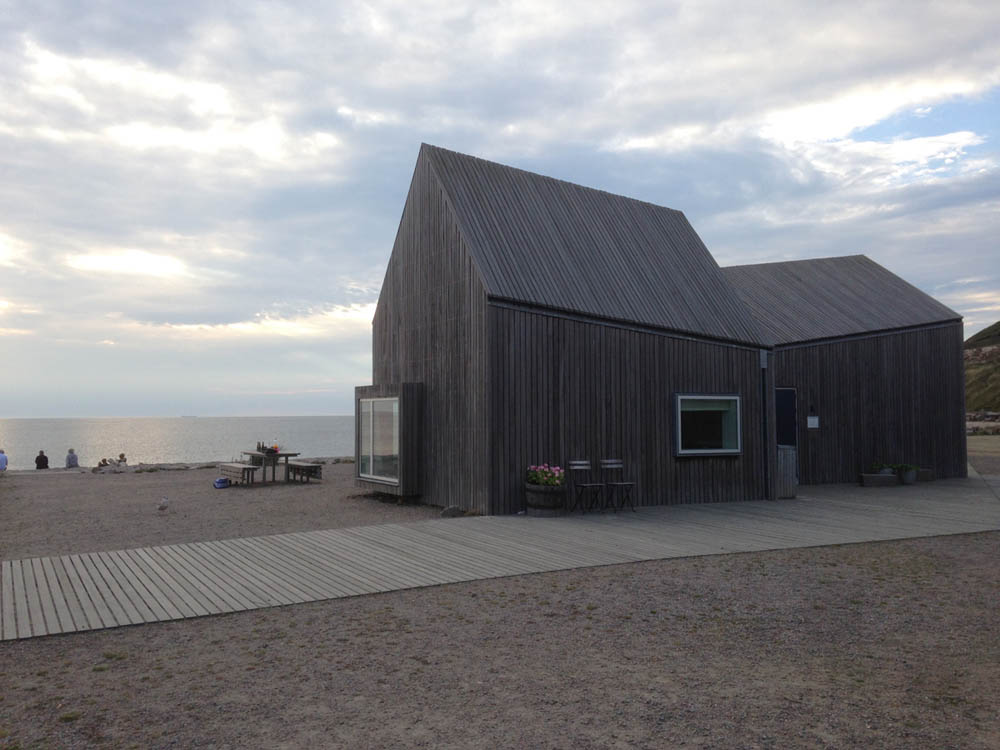As a builder in the planning phase of your dream home, there are many decisions to be made. Size, equipment and also the construction method of the individual trades must be decided, often together with the architect and the executing companies. Given the large number of individual components, this is a time-consuming and sometimes grueling process. Another case is the choice of a suitable floor – a wooden beam or a concrete floor? In the following article we provide a little help in this regard.
The wooden beam ceiling
Wooden beam ceiling is certainly the oldest form of ceiling construction, its basic structure quickly explained. In the simplest variant, several beams rested on the outer walls and load-bearing inner walls of a building. The upper finish was a simple plank floor. The individual boards were attached at right angles to the load-bearing wooden beams.
Since every step, no matter how quiet, in such a ceiling penetrated into the floor below due to the spreading vibrations, and it did not look good with the thermal insulation either, more elaborate constructions were soon used.
For impact sound insulation, the ceiling structure had to be weighted down. For this purpose, an additional batten was installed, which served as a support for an intermediate floor, the so-called blind or false floor. The resulting cavities between the floorboard and the blind floor were now filled. Depending on the type of filling material, this way it was also possible to compensate for humidity and heat loss, as well as achieve airtightness, wood and fire protection. Common materials were and are various slags, clay, perlite, expanded clay, cellulose flakes and fibers, and many others.
The modern wooden beam ceiling
In modern wood joist ceilings, the blind floor, impact sound insulation and floating screed are executed above the joist layer so that the underside and sides of the joists are visible. Exemplary for this are modern houses in country style. Of course, the undersides of the ceiling can be paneled or plastered with the help of an attached plaster base. Suspending the ceiling by means of plasterboard is also easy to do.
The concrete ceiling
In the case of concrete floor slabs, four basic variants can be distinguished:
- the prestressed concrete precast floor
- the in-situ concrete ceiling
- the hollow stone ceiling
- the filigree ceiling
The prefabricated prestressed concrete floor
The prestressed concrete or hollow core precast floor consists of several prefabricated molded parts that are joined together on the construction site to form the final floor slab. This enables enormously time-saving construction. The standard moldings in themselves are equipped with cavities inside, which on the one hand reduce the overall weight and on the other hand increase the ability of thermal insulation, especially if the cavities are additionally filled with insulating material. Between the individual concrete elements, steel inserts made of high-strength prestressing steel are incorporated, which keep the slab in tension. This means that even large rooms can be bridged without intermediate piers, which is why precast prestressed concrete floors are increasingly being used in the construction of office buildings.
The in-situ concrete ceiling
In-situ concrete is either transported to the construction site or produced directly there. In liquid form, it is poured into an existing formwork and thus enables precise fabrication of all necessary individual parts. In contrast to the precast prestressed concrete floor, the cast-in-place floor consists of solid, steel-reinforced concrete without voids. Therefore, it has a much higher dead weight and poor thermal insulation properties.
The hollow stone ceiling
The hollow core floor consists of prefabricated hollow blocks made of normal or lightweight concrete that are suspended between reinforced concrete girders or metal girders with a concrete base. In this way, a homogeneous closed underside of the ceiling is created. Pouring concrete closes the surface. Due to the low weight of the individual parts, transport is possible without heavy equipment. Lifting equipment is also not absolutely necessary, so that the hollow core ceiling is used in particular for renovations of old buildings and in confined spaces.
The filigree ceiling
The filigree or element ceiling is the most widely used floor slab in single-family house construction. It consists of up to 250 cm wide semi-precast reinforced concrete elements reinforced on the underside with lattice girders and structural steel mesh. The lattice girders consist of welded concrete steels, a visible top chord member, two bottom chord members set in concrete, and connecting diagonals. In addition, the floor elements are provided with transverse reinforcement and cast with in-situ concrete, with the diagonals of the lattice girders ensuring the bond between the precast element and the in-situ concrete. Slab formwork is not required for this slab design, which saves time and construction costs. However, the drying times of the in-situ concrete must also be taken into account here.
Upper and lower chord: Upper and lower chords of a beam
Now which ceiling is better?
Advantages wooden beam ceiling
The wooden beam ceiling can be constructed relatively simple. Due to the absence of construction moisture, there is also no need to observe drying times. Sound and heat insulation are good when using appropriate materials and although mainly wood is used, a wooden beam ceiling also meets the general fire regulations and resists fire by treating the wood. Visually, the wooden beam ceiling gives a warm feeling of living thanks to the use of a natural building material. Another advantage is the possibility to realize relatively large spans with low weight.
Disadvantages wooden beam ceiling
If not executed correctly, so-called sound bridges can occur in wood joist ceilings, for example where floorboards have been nailed directly to joists. The impact sound causes the air on the floor below to vibrate, which reaches our ears as noise. Likewise, wood as a building material is far more susceptible to pests and fungi than concrete.
In this article you will learn more about construction botch.
Advantages concrete ceiling
Concrete ceilings, on the other hand, score mainly on the uncomplicated installation, which, due to the use of prefabricated elements, offers mainly practical and financial advantages. The exception here, however, is the in-situ concrete ceiling, which, unlike the other three variants, is much heavier and therefore has good sound-insulating properties.
To go to the ceiling…
The decision for wooden beam or concrete ceiling is difficult and ultimately up to you. However, you should definitely put the planning and execution in the hands of professionals. Personal preferences are as crucial to your decision-making as static requirements and budget constraints. If you need assistance in exploring all factors, simply contact us. Our experts are on hand to provide you with advice and support.



